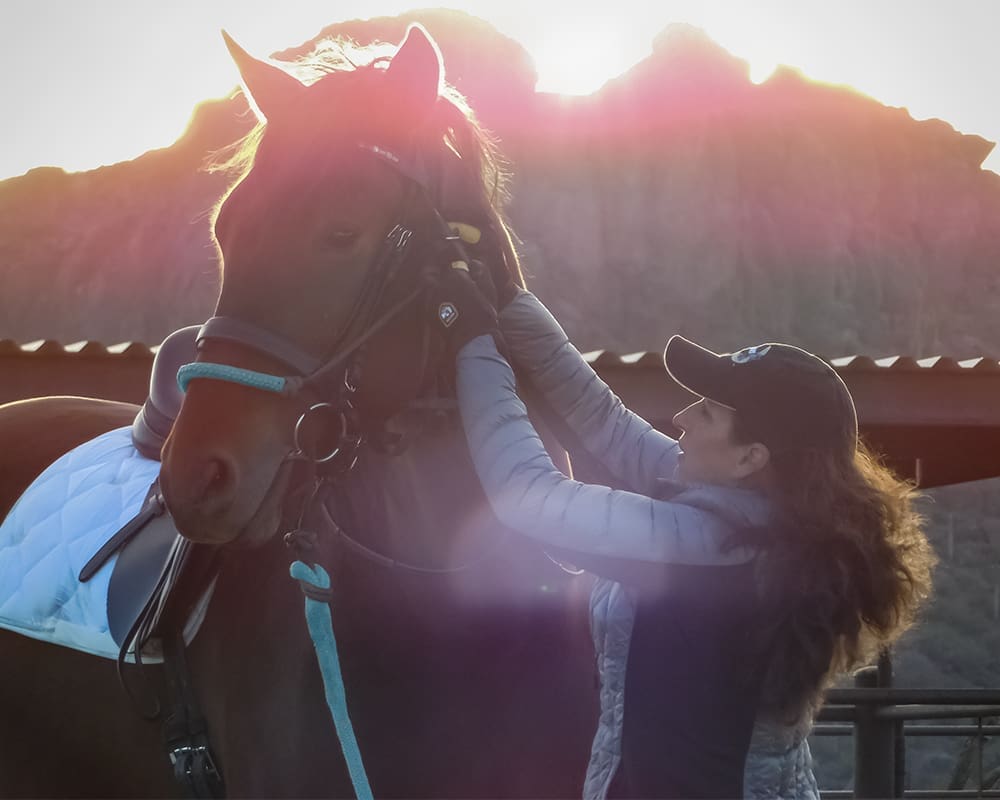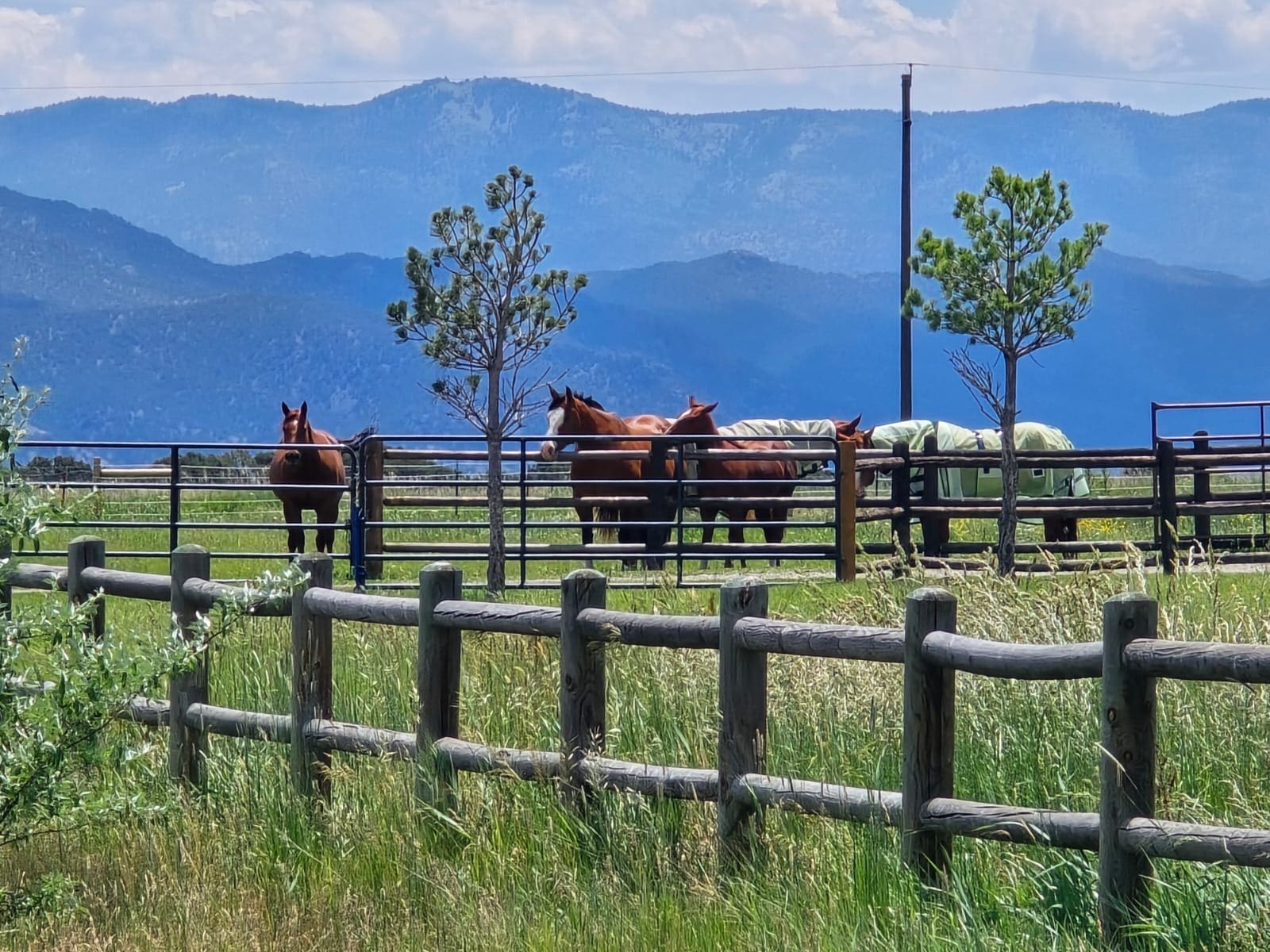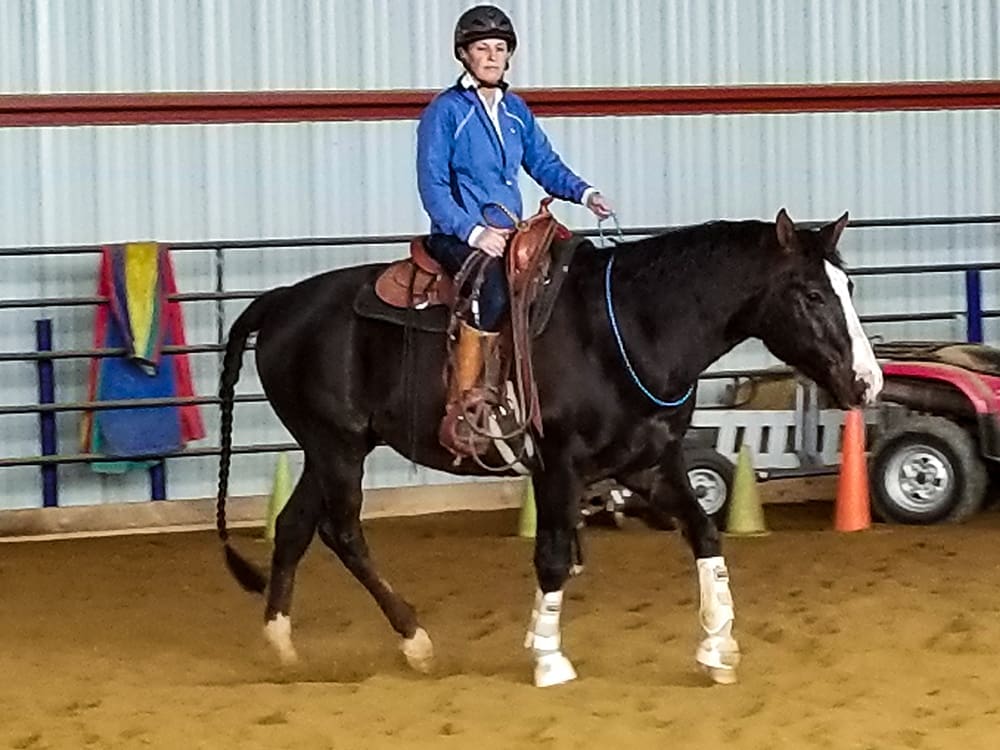
Horses are amazingly adaptable creatures, and over thousands of years they have partnered with us and found ways to make themselves invaluable to human society. Since before horses were even ridden, humans have attempted to find effective ways to train them to perform an array of different jobs.
Horses are lightning-fast learners, and they can be easily trained to accomplish different skills. That also means we can easily (and unknowingly) train them to behave in ways we don’t want them to. That is where a lot of humans get their horses in trouble, using tactics or tools to “fix a problem” without addressing the underlying issue—or even knowing what it is.
This is why it is important to know how to effectively communicate your intended message to the horse. And it’s just as important to know why you are doing it.
Natural Aids vs. Artificial Aids
Classical horsemanship tells us that we have two types of “aids of communication” with the horse: natural aids and artificial aids.
I spend most of my teaching time—at clinics, in demonstrations, and in my online coaching program—talking about the natural aids and how to use them clearly and effectively to communicate with the horse.
The natural aids are the rider’s seat, legs, hands, and voice. I strive to use all my aids when cueing, starting with my seat, and consistently sequencing them in a way that sets the horse up for success. I believe that the better we are at using the natural aids, the less dependent we are on other aids.
Artificial aids include a myriad of man-made items used in horse training, strictly for the purpose of communication and control. They include some quite useful tools, like bits, bridles and reins, as well as more serious reinforcement tools like whips, crops, and spurs. Also included in artificial aids are some stronger devices like tie-downs, draw reins, or nose bands designed to strap the mouth shut, to physically force the horse to conform.
My personal goal in riding and training horses is to bring my communication with the horse to a level that I can ride a complete reining pattern without the aid of a bridle or saddle, and using only shifts of weight, leg positions, and gestures with my arms. However, it’s highly unlikely I could ever attain that lofty goal without the use of some artificial aids along the way.
There is nothing wrong with using some artificial aids, as long as you understand why you are using them, how to use them appropriately, and always have a plan to get away from using the artificial aid so that it does not become a crutch.
Here, I will outline my rules for the use of artificial aids, with consideration to the horse’s point of view and helping the horse be successful in its training.
Rule #1: Know Why
The first thing I ask a rider who is using a martingale, tie-down, a tight noseband, or a noseband that includes a strap around the mouth is why are you using it?
Surprisingly, most riders aren’t sure. I often get answers like, “He’s always been ridden in this,” or “My trainer told me to use it,” or “It’s what everyone else in my discipline uses.” To me, none of these are acceptable answers.
Sometimes, people have an inaccurate view of why they are using the artificial aid, like that a running martingale is supposed to lower the horse’s head—but it’s not. It’s intended to keep the head from going dangerously high. If the rider is using it to “lower the head,” she not only is using it wrong, but probably has it adjusted wrong as well.
When the mouth of the horse goes above the withers, the rider loses control. When properly adjusted, the running martingale prevents the horse from lifting his head that high but otherwise does not interfere with the horse’s mouth. If it is incorrectly adjusted in an attempt to lower the head, it interferes anytime the rider uses rein contact, and when you take it off, the horse’s head goes right back up.
Why and if you need the artificial aid is important. Many aids are useful and effective in the training of a riding horse, but for the most part, their use should be temporary. For instance, I sometimes use a running martingale (often called “training forks”) on a very green horse until I feel sure I have adequate control if the horse spooks, bolts, bucks, or otherwise blows up on me.
Often, horses that are being ridden in demanding sports like horse racing, barrel racing, stadium jumping, cross country, etc., are always ridden in a properly adjusted running martingale during competition. This is because their emotionality is high, and they are ridden on the edge of control at times. It helps the rider maintain control in those adrenaline-spiked, hairy moments.
On the other hand, if the artificial aid is being used to mask a problem, like head-tossing, inverted neck, excessive spooking, threatening behavior, tongue over the bit, or an open mouth, I’d like to know why the horse is displaying these behaviors and find a solution at the root of the problem. Does the horse need more training? Is a bit change needed? Is it a saddle fit issue? Is the rider over-riding, riding without feel, never releasing, or using too much contact?
Bottomline: Is the artificial aid a resolution to the issue? Or is it the equivalent of a Band-Aid covering an infected wound? Most of these “problems” in the riding horse are fixable by first looking for a physical cause (pain), then addressing the tack, improving the horse’s training, and changing the way the rider rides.
Rule #2: Know How to Use it Correctly
Each artificial aid requires the user to know how, when, and where to use the aid—and how to adjust it correctly.
This is especially true of martingales, tie downs, and draw reins. Often, I see riders using these aids with improper adjustments or incorrect technique. Not only are they ineffective when used incorrectly, but they sometimes become downright dangerous and rather torturous to the horse.
Martingales and tie-downs are basically the same thing in my book—a running martingale has two forks, usually coming off a breast plate, with rings on the end for the reins to slide through; the standing martingale (English) or tie-down (Western) is a fixed strap from the girth to the noseband (no connection to the reins). There are a few common variations like the German martingales, which combine the action of a martingale with the action of draw reins.
To check if a martingale is properly adjusted, simply bring the rings of the running martingale or the end of the standing martingale/tie-down up toward the throat of the horse. The ends should reach all the way to the throat.
In the case of the running martingale, if it is shorter than that, every time the rider uses rein contact, the horse feels downward pull, not a direct feel to the rider. Also, since the rein contact feels far different with a too-short running martingale than without it, the rider becomes reliant on the aid. In other words, once you take the martingale off, the horse’s head goes right back up. Also, it’s critical for safety that the reins used in a running martingale have rein stops.
If the standing martingale or tie-down is too tight, it is constantly pulling downward pressure, even when the horse softens. This ultimately works against the rider, because that downward pull tends to make the horse want to stiffen its neck and pull up against it—conditioning the neck muscles in the wrong way. If a tie-down/standing martingale is adjusted too short, it can impair the horse’s balance, if it stumbles or rears.
While I know many good horse trainers that have success using draw reins to train a horse into the frame or headset they want, it’s not an aid I would ever use, and I definitely don’t think amateur riders should use them.
Draw reins run from the rider’s hands through the rings of the bit, then down to the saddle or girth. When the rider pulls contact, the pulley action forces the horse’s chin in towards its chest. The horse is not giving to rein pressure, it is physically forced into it.
The potential for abuse is high with draw reins. Improper adjustment and improper usage leads to entrapment for the horse. Used properly, along with regular reins, the draw reins have a minor effect and may help the rider bring the horse into frame. When draw reins are used alone, without regular reins, they can be dangerous, easily over-rotate the horse, and do physical and mental damage to the horse.
It’s very easy to become completely reliant on draw reins. In other words, you only get the result you want when using them. But as soon as you take them off, the head comes back up, nothing was gained, and there is a high probability that more problems were created or existing issues worsened. Draw reins are also not allowed in any competition that I am aware of.
Training the horse to properly yield to rein contact, and training the horse to carry its head in the position the rider wants is not difficult, but there are no shortcuts. It will take time, patience and skill from the rider, and a slower progression of training.
Consider collection, lowering the head, rounding the horse, or whatever kind of head position or frame you want from the horse. Rather than force the head into a position with draw reins, tie-downs, or martingales, I’d take the time to teach the horse to give to pressure, to search for the release, and make a pact that anytime the horse goes into the desired frame, it will always find relief there, with a total release of pressure. This requires appropriate action from the rider too.

Rule #3: Have an Exit Plan
Ideally, when a horse is trained with a classical progression and good foundational layers, and the rider uses feel and give-and-take (instead of taking and taking more), these kinds of artificial aids might never be needed. The result is also far superior, with a horse that is relaxed throughout its body, yielding to the natural aids of the rider with softness and willingness.
Artificial aids can seem much more expedient in getting a result (think headset), but the result itself is inferior, with a horse that is tense, resistant, and can become reliant on the aid. There are many situations in which the temporary use of an artificial aid is helpful, but if used, I always want to have an exit plan.
Always train toward the goal of minimal aids. For instance, some artificial aids, like crops and spurs, are intended to reinforce the natural aid—in this case, the leg cues from the rider.
In my opinion, these reinforcement aids would never be used on a young, untrained horse, because they should instead learn to respond to the lightest use of the natural aids. But oftentimes, trained horses become unresponsive to the cues of the rider—usually through ineffective riding—and a reinforcement aid might temproarily be needed.
Reinforcement is not punishment—you need to understand the difference. Reinforcement makes a response MORE likely to occur and punishment makes a response LESS likely to occur. You can read more about that here.
Let’s say I have a mature horse that’s been ridden a lot by beginners and is somewhat lazy (an important quality in a beginner’s horse). Over time, that horse may have learned to ignore the go cues of the rider, preferring to stand in the middle of the arena and endure the leg thumping until the rider quits (as they always do because you can only kick for so long). This is the time to bring in reinforcement, in the form of a crop or quirt (I would not recommend spurs in this situation).
Armed with the artificial aid (and a more advanced rider than the beginner student), a light go cue is given with the natural aids—a forward release of the reins, a soft closing of two legs, a slight shift forward in the weight of the rider, and perhaps a cluck from the rider’s voice. If the trained horse fails to respond to light aids, a small tap with the crop, right where the leg aid is used, reinforces the cue. The tap of the crop is not part of the cue itself.
If the rider uses great timing (the reinforcement comes within a second of the cue), and the appropriate amount of pressure to motivate change in the horse (and no more), reinforcement with the crop should only be needed once or twice. However, if you used the crop first when you wanted the horse to go (before cueing with the natural aids), or at the same time as the cue, the horse and rider become reliant on that artificial aid and will always have to use it.
Always make sure that if you are using an artificial aid, there is an exit plan, and it is not being used in such a way that the rider becomes forever reliant on the artificial aid to get the desired response.
Think Twice
Many horse trainers and riders have had great success using more forceful training tools, but I find greater joy and higher quality results using minimal artificial aids.
Rather than mask a training problem by strapping the mouth shut with flash nosebands or figure eights, or a cavesson so tight that you can hardly unfasten it (impeding the horse’s breathing, its ability to swallow—yes, that is why it’s drooling—and causing pain to its tender nose), why not find a solution to the problem?
When the horse is displaying undesirable behaviors while being ridden, and you think an artificial aid is needed, consider these rules first. Also, be aware that the horse is not acting in a vacuum—it is reacting in response to the rider.
I always say, when you change, the horse will go with you. So before you jump right to an artificial aid to force compliance in the horse, consider what you may need to change and work on as a rider to help your horse better.




